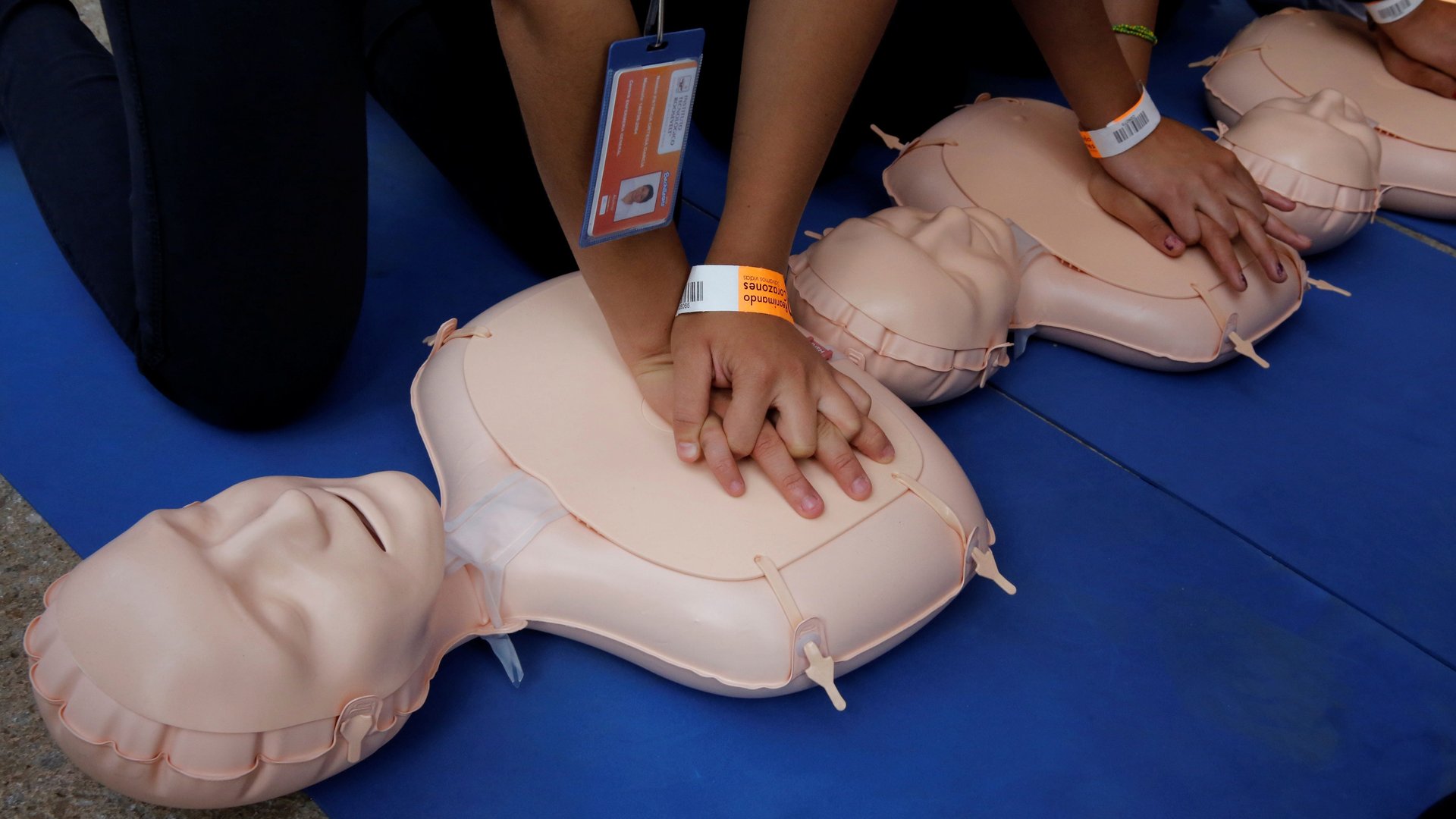The UK is teaching school-age kids this simple technique to save lives
In a survey conducted last year, the British Red Cross found that only 5% of UK adults would be willing to intervene, or would even know how to, if they saw someone having a potentially life-threatening first aid emergency. The British government is determined to change that.


In a survey conducted last year, the British Red Cross found that only 5% of UK adults would be willing to intervene, or would even know how to, if they saw someone having a potentially life-threatening first aid emergency. The British government is determined to change that.
Secretary of education Damian Hinds announced today (Jan. 3) that as of 2020, every secondary school student in the UK will be trained in first aid and cardiopulmonary resuscitation (CPR) techniques, as part of an upcoming reform of health, relationships, and sex education in state-funded schools. Students will be taught how to administer CPR, how to use a defibrillator, and how to identify and deal with common injuries like head trauma.
According to the British Heart Foundation, only 10% of people who have heart attacks outside of hospital in the UK survive. That’s where CPR training for bystanders comes in: The American Heart Association says that giving someone CPR right after they have a heart attack can “double or triple” that person’s chances of survival. Other studies conducted in Sweden and the United States have shown that “bystander cardiopulmonary resuscitation (CPR) and early defibrillation have been associated with survival rates exceeding 50%.”
In a statement, Hinds said his department’s reform will give bystanders the tools to help the 30,000 people who suffer from out-of-hospital heart attacks each year. “On arriving at university I was struck that the American students I met knew how to do CPR—and I didn’t have a clue,” he explained. “As a father, I want my children to have the knowledge and skills they need to keep themselves safe and help others, and as education secretary, I want that for every child.”
In the US, a majority of states require that high schools teach their students CPR. But in practice, not all of them do, mainly because CPR training is expensive, and instructors are hard to find.
The UK government first proposed this measure in June 2018, in response to a report (pdf) about the 2017 Manchester terrorist attack, in which 22 people died when a man set off a bomb in a crowded arena after an Ariana Grande concert. Drafted by Robert Walter Kerslake, a member of the House of Lords, it found that “some members of the public and other responders, whilst trying their very best in genuinely harrowing circumstances, did not appear familiar with first aid principles and/or were attempting to use more complex major-trauma procedures without sufficient knowledge.” The report went on to suggest that “it would be of great benefit if there was a greater public awareness of basic first aid principles.”
Many NGOs and public health agencies celebrated the government’s announcement about CPR training in secondary schools. As Huon Gray, director for heart disease at the National Health Service stated, “Knowing how to react when someone suffers a cardiac arrest will truly save lives.”